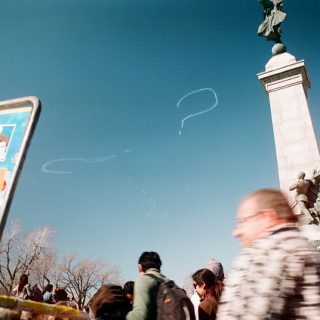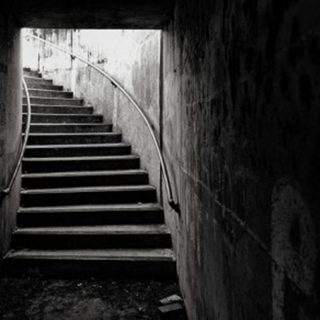Introduction
As one begins to understand oneself, that very beginning is the moment of freedom; and that is why it is very important not to have a guru, or make any book into an authority—because it is you who create authority, power, position. What is important is to understand yourself. — J. Krishnamurti, Sixth Talk in Bombay, 1956
This is the complete introduction to Addiction Is the Symptom, by Dr. Rosemary Ellsworth Brown
What is addiction? Over the course of a lifetime, I’ve experienced it personally, researched it academically, and, as a psychologist, treated it professionally. And I’ve come to define it more broadly than most: an addiction is any person, substance, or situation over which we have lost choice or believe we cannot live without—as evidenced by our continuing to consume or do or just want it despite the consequences for our health, mental state, family, and freedom.
Alcohol and other drugs, food, gambling, shopping, sex, relationships, money . . . We can develop an unhealthy emotional and often physical dependency on any one of these and more. You want to stop, but you can’t. Or, sure, you can stop. Any time! But you can’t stay stopped. The fact that you’re reading this suggests that you know the feeling all too well. You’ve quit . . . many times. You start a new diet every Monday. You lost your paycheck at a poker game and cannot pay the rent. You went back to your abusive boyfriend again. Relapse, slip, backslide, fall off the wagon. Whatever you want to call it, it’s demoralizing at best, life threatening at worst.
You are far from alone. Addiction is among the most pervasive and urgent problems of our time. Consider a few statistics for just substance addictions. In the United States in 2010, 8.7 percent of the population age twelve or older was classified with substance dependence or abuse. (1) One in six American adults admits to binge drinking, (2) and in 2010 alcohol caused nearly a third of all US vehicle fatalities. (3) While things like malaria and tuberculosis are still top concerns in the poorest countries, it is said that in most of the world, disease is now driven largely by overindulgence in alcohol, tobacco, and food. (4) Keeping in mind that not all obesity is caused by addiction (also at play are economic, environmental, and genetic factors, among others), obesity rates in 2008 were nearly double those of 1980; one in three adults were overweight (two out of three in the United States). (5)
These are dire numbers, yet I don’t want to encourage you to think of addiction only in terms of extremes. It occurs on a spectrum, the whole of which is unhealthy. With regard to food, for example, we put anorexia at one end and obesity at the other, generally denying the area between. But anorexia and the typical weight-loss diet differ only in intensity. Anyone who goes on a diet has a problem with food—much the same way that anyone who goes on the wagon has a problem with alcohol. Many people are unaware that they have a problem until the object of their addiction is withdrawn, or threatened to be.
How do we end this? How do you end your addiction?
Traditionally, treatment has focused on one addiction at a time. Witness the proliferation of twelve-step groups not officially related to Alcoholics Anonymous since its founding in 1935. Overeaters Anonymous, Narcotics Anonymous, Gamblers Anonymous, and Codependents Anonymous are some of the best known, but there is an ever-expanding universe of others. The latest one I am aware of is Internet and Tech Addiction Anonymous (ITAA). Unfortunately, this glut of programs is not an indicator of success, as research has suggested for decades. Media reports and several recent books have finally begun to highlight this fact with regards to AA in particular. The numbers vary, but none are good. While the program is helpful to many people with alcohol addiction, at least seven out of ten participants relapse—they can’t stay stopped. (6) Some research suggests that as many as nine out of ten will experience at least one relapse during the four years after treatment (which usually involves the steps); the rates are similar for nicotine and heroin addiction. (7) “Relapse is part of recovery,” people often say. It’s the norm.
The picture is even more discouraging when you account for the fact that many people who do manage to abstain from their substance, activity, or person of choice do so by substituting other addictions. At any substance recovery meeting (and in the course of forty years, I’ve probably been to upwards of two thousand), you will find plenty of coffee, cigarettes, and sugar. A twelve-step program can itself become a substitute addiction.
People call this recovery. In reality, it is only symptom management.
The limited success of twelve-step programs, and of addiction treatment in general, is due to an incomplete grasp of the problem. As I will share with you in detail in this book, single-addiction treatment doesn’t work because addiction is the symptom, not the problem. The problem, common to all addiction, is an underlying emotional dependency. Its symptoms—addictive behaviors—are characterized by attempts to control and manipulate externals to meet internal emotional and spiritual needs. The fundamental dynamic is one of dependency on “the other,” whatever or whomever that might be.
Where does emotional dependency come from? It’s deeply conditioned during childhood. Now, don’t think I’m blaming your mother; the parenting system is much bigger than any parent. It’s a trap in which we are all caught. One that crosses time and culture. The objective of this conditioning is control—the original addiction. And what better way to control children, to ensure their obedience, than to teach dependency? Dependency is readily achieved through rewards and punishments, and the fear they inspire. We never learn how to meet our own needs, only how to use others to get them met. Long before we ever take a drink or shoot up or start eating entire cartons of ice cream in one sitting, we become users. And to one degree or another, this is the model for all our relationships—with substances, with other people, even with ourselves. You don’t have to have what most people would characterize as an addiction to find your life compromised by emotional dependency. It casts a long shadow.
I looked long and hard for the solution to all this. As it turned out, I needn’t have looked far: it was hiding in the Twelve Steps all along. Through my many years of research, sponsoring people as a member of AA, and working as a psychologist in private practice, I developed a precise and truly comprehensive modification of the steps—let’s call it the Brown Method—that addresses not only the symptoms but also the cause of addiction. It is essentially a spiritual process, but one with powerful psychological components. The result is a qualitative change in consciousness that is the foundation for healing. That is, you can leave relapse and mere symptom management behind. “Precise and comprehensive” is not what you will find in the myriad twelve-step programs. Rather, the general approach is to do the steps in your own time and in your own way. In other words, when you’re “ready,” and by trial and error. This approach is well suited to our addictive behaviors (think control: “No one can tell me what to do!”), but not to recovering from them.
As you’ll see, I’ve modified the Twelve Steps in important ways that shift the primary focus from symptom to cause, starting with the foundational Step One. The heart of my method, the place where the real work gets done, is Step Four, “a searching and fearless moral inventory of ourselves.” As I’ve modified it, it’s an inventory of all relationships, and it concerns not so much how you may have hurt others, but rather the lifetime of hurts you yourself have suffered. It is the key to healing. Here, “precise and comprehensive” is particularly important. And so I devised the Fourth Step Algorithm: a set of specific instructions that empowers you to work the step with a facilitator—a professional therapist or counselor. Very little is left to chance. No more trial and error. And unlike conventional therapy, the algorithm is not about talking, but about working—for twenty to thirty minutes a day. Consequently, thanks to 21st-century technology, most of your interactions with your facilitator can happen at a distance, via phone, Skype, email, or text.
I won’t tell you my step method is easy, but it is simple. Not to mention, in my considerable experience with sponsees (people who are sponsored, in program-speak) and clients, far more effective than the traditional steps.
Why does this process work? That question is best answered by doing it, but the short answer is this: because it is the beginning of self-parenting, and therefore of healthy self-reliance, also known as freedom. Through these modified steps, particularly the fourth and fifth, you become acutely aware of the unconscious conditioning that’s been driving your addictive behaviors. Your learned dependency becomes the independence that is your birthright as you learn instead to turn to a higher power within for what you need. Most of all, you begin a lifelong journey of spiritual self-discovery that is the foundation of healing.
What I’m telling you is that you can heal yourself of addiction. I should say that if you’re addicted to chemicals, this doesn’t mean it will magically become safe for you to use; it means you’ll be able to stay stopped and feel good doing it. Whatever your addiction, or to whatever extent emotional dependency is running your life, you will regain choice. You will no longer have an addiction, in the broadest, deepest sense of the word. I myself am testament to this, along with my clients, seven of whom (Chris, Alex, Carolena, Jen, Ernie, Joan, and Paul) you’ll meet in these pages.
Yes, I know . . . this directly contradicts everything many of us have been told about addiction, to alcohol in particular (“You don’t graduate from the program”). Consequently, my work has not always been well received by people who are addicted or my peers in the treatment business. It’s been a struggle to get this book published. But just because a disease is labeled “chronic” or “incurable” does not mean that it can’t be healed, only that no one has yet figured out how to do it. It’s taken me a lifetime, but I have figured out how to do it. This book is meant to empower you to do it too. I invite you to begin your own journey of self-understanding and self-healing.
If you find that you are not ready to take that journey, I hope you will take one thing from this book: you are not your addictive behavior. There is nothing wrong with you. What’s wrong is all the garbage—the conditioning—piled on top of you. Take that thought to the mirror each morning, and try, for even a moment, to see who you really are. Not “an addict,” “an alcoholic,” “a binge eater,” “a sexaholic,” or whatever false identity you’ve been saddled with. No. A person. And a beautiful one at that.
Summary
• An addiction is any person, process, substance, or situation over which we have lost choice or believe we cannot live without.
• People who have addictions have lost choice. Specifically, they want to permanently stop doing something destructive, but can’t.
• Traditional single-addiction treatment inevitably results in some form of relapse because addiction is the symptom, not the problem.
• The underlying problem, the problem common to all addictions, is emotional dependency.
• Emotional dependency is conditioned by our parenting system, whose objective is control (the original addiction), and thus plagues almost everyone to some degree.
• Emotional dependency is the model for all our relationships—with substances, with other people, even with ourselves.
• Emotional dependency can be unlearned through the modification of the Twelve Steps outlined in this book—the Brown Method—which systematically brings your unconscious conditioning to consciousness, thus restoring choice.
Footnotes
(1) Substance Abuse and Mental Health Services Administration, “Results from the 2010 National Survey on Drug Use and Health: Summary of National Findings,” NSDUH Series H-41, HHS Publication no. (SMA) 11-4658 (Rockville, MD): accessed 18 Jul. 2014, http://www.samhsa.gov/data/NSDUH/2k10NSDUH/2k10Results.htm.
(2) Jennifer Doren, “Sobering Stats on US Alcohol Consumption,” NBC Washington (10 Jan. 2012): accessed 18 Jul. 2014, http://www.nbcwashington.com/news/health/ Sobering-Stats-on-US-Alcohol-Consumption-137049283.html.
(3) The Century Council: accessed 18 Jul. 2014, http://www.centurycouncil.org/drunk-driving/drunk-driving-statistics.
(4) The Economist, “Special Report: Obesity” (15 Dec. 2012): 78.
(5) Ibid., 15.
(6) Norman K. Denzin, The Alcoholic Society: Addiction and Recovery of the Self (New Brunswick: Transaction Publishers, 1993), 275.
(7) National Institute on Alcohol Abuse and Alcoholism, no. 6 PH 277 (October 1989): accessed 18 Jul. 2014, http://pubs.niaaa.nih.gov/publications/aa06.htm.





